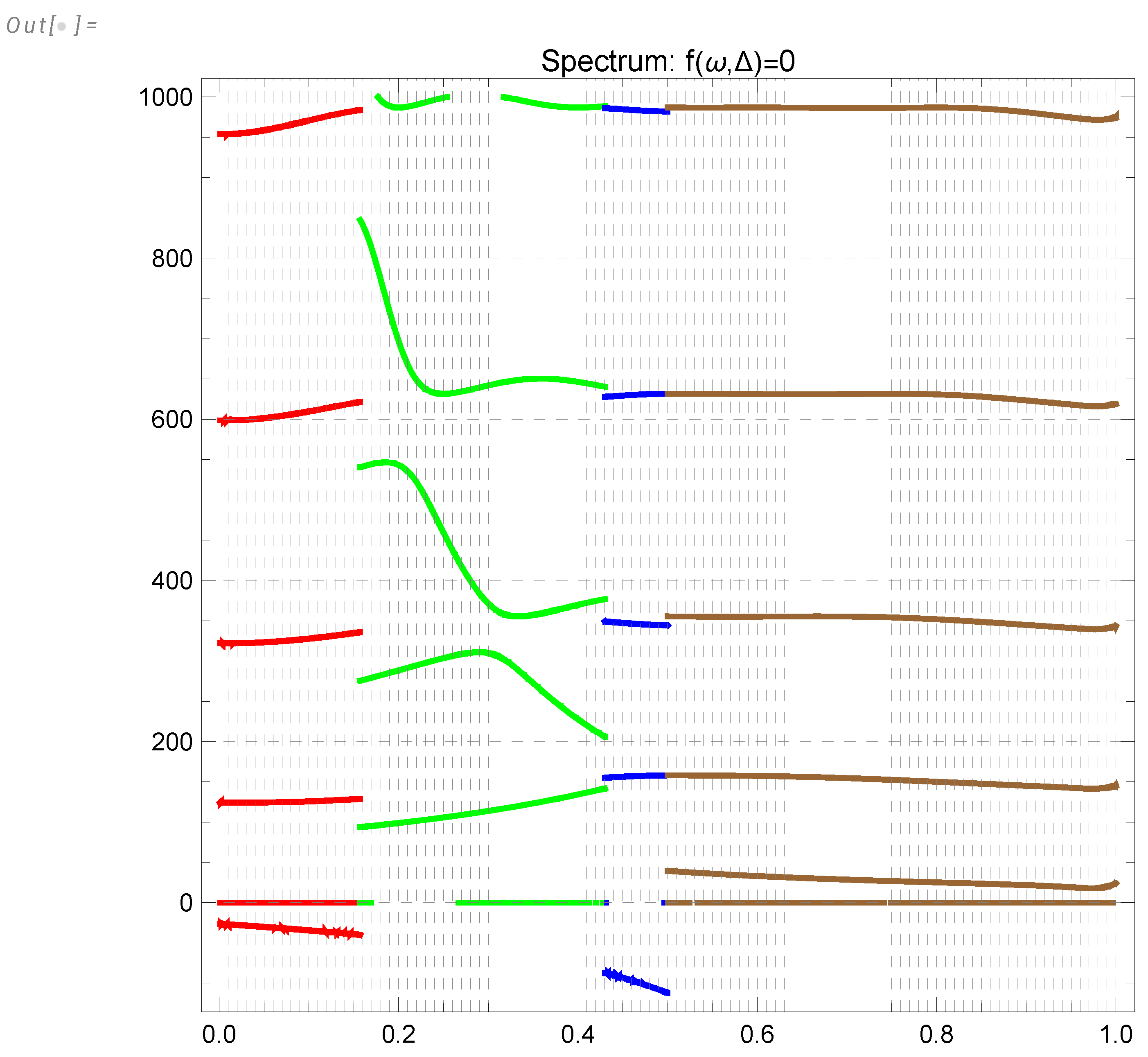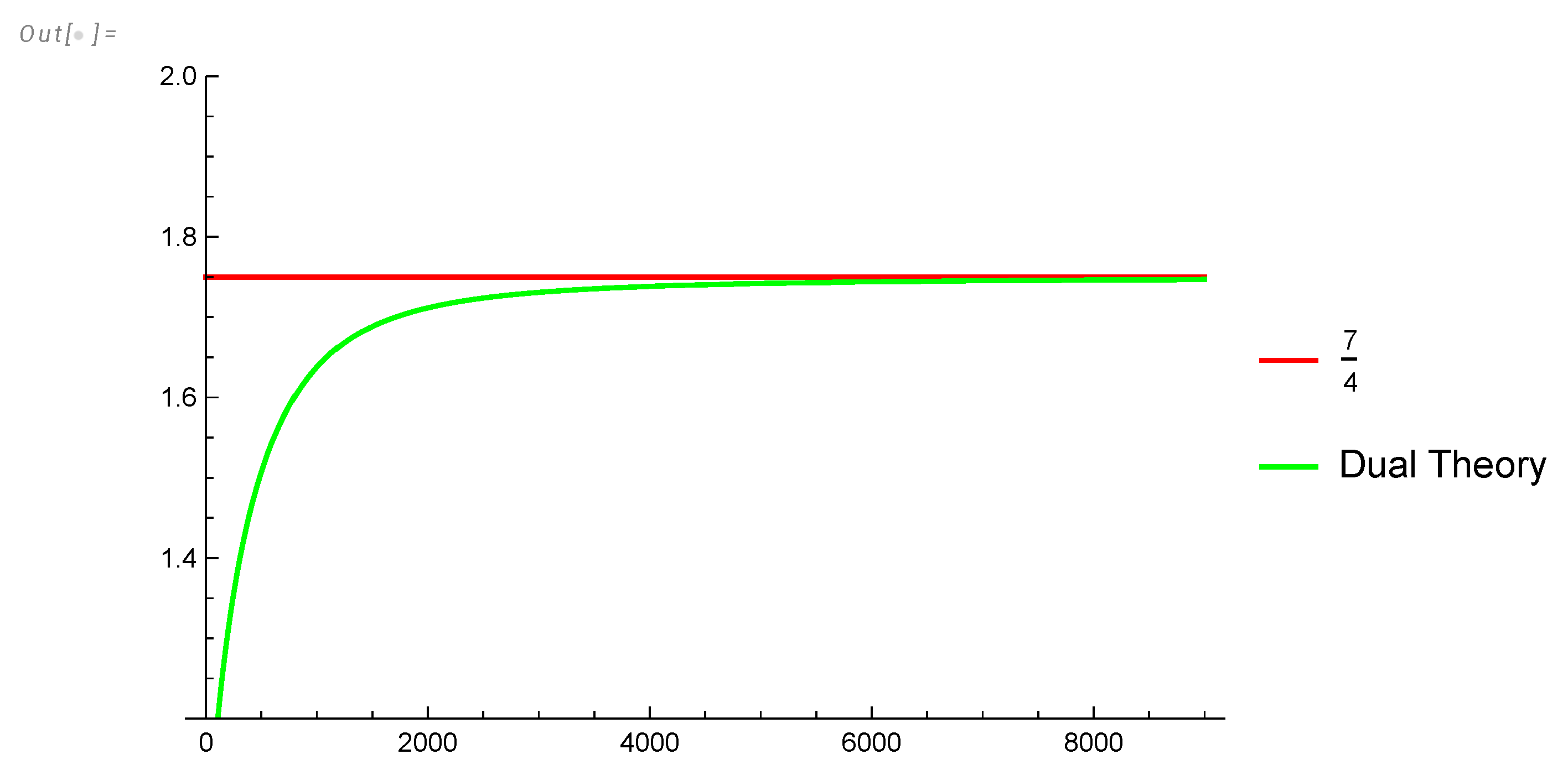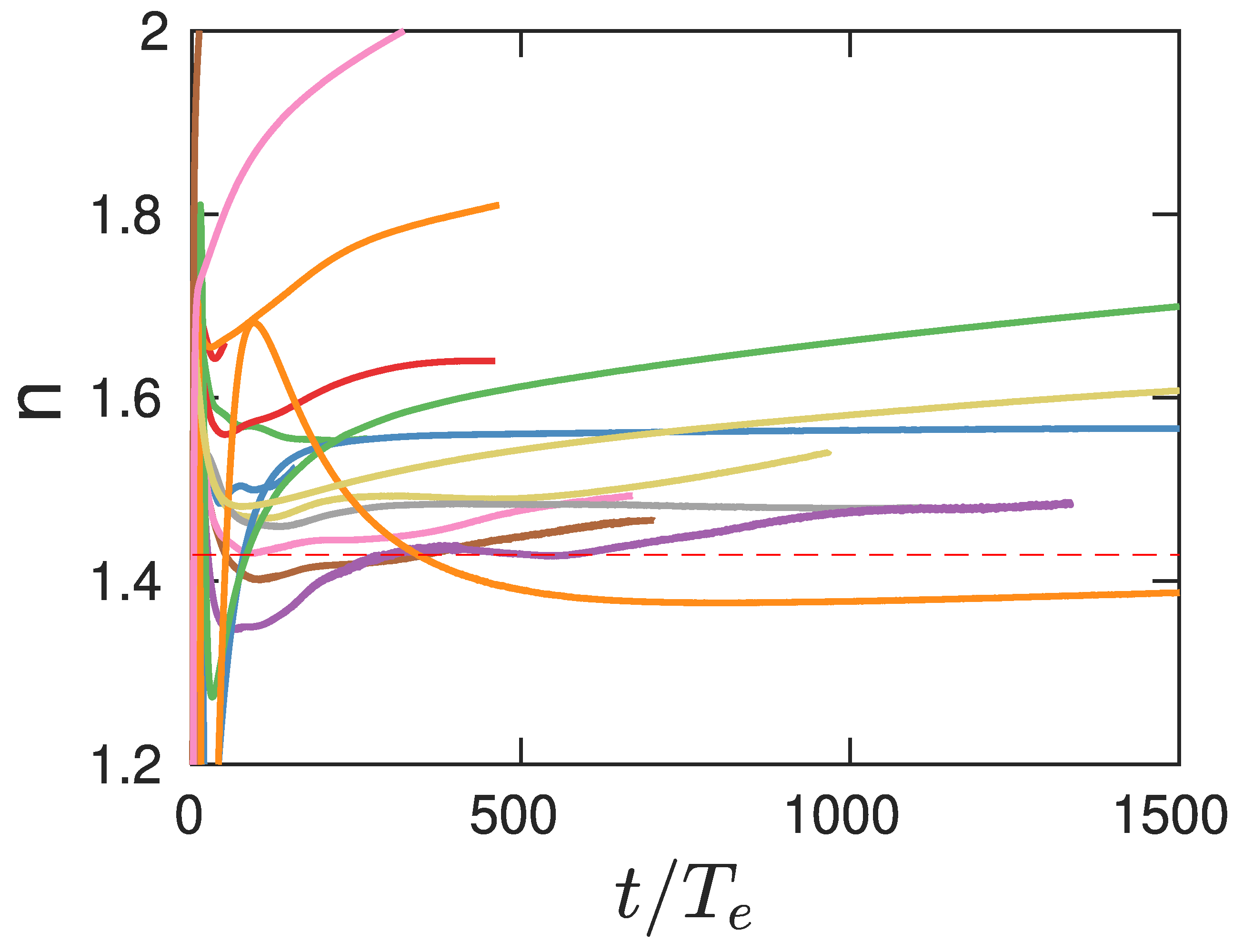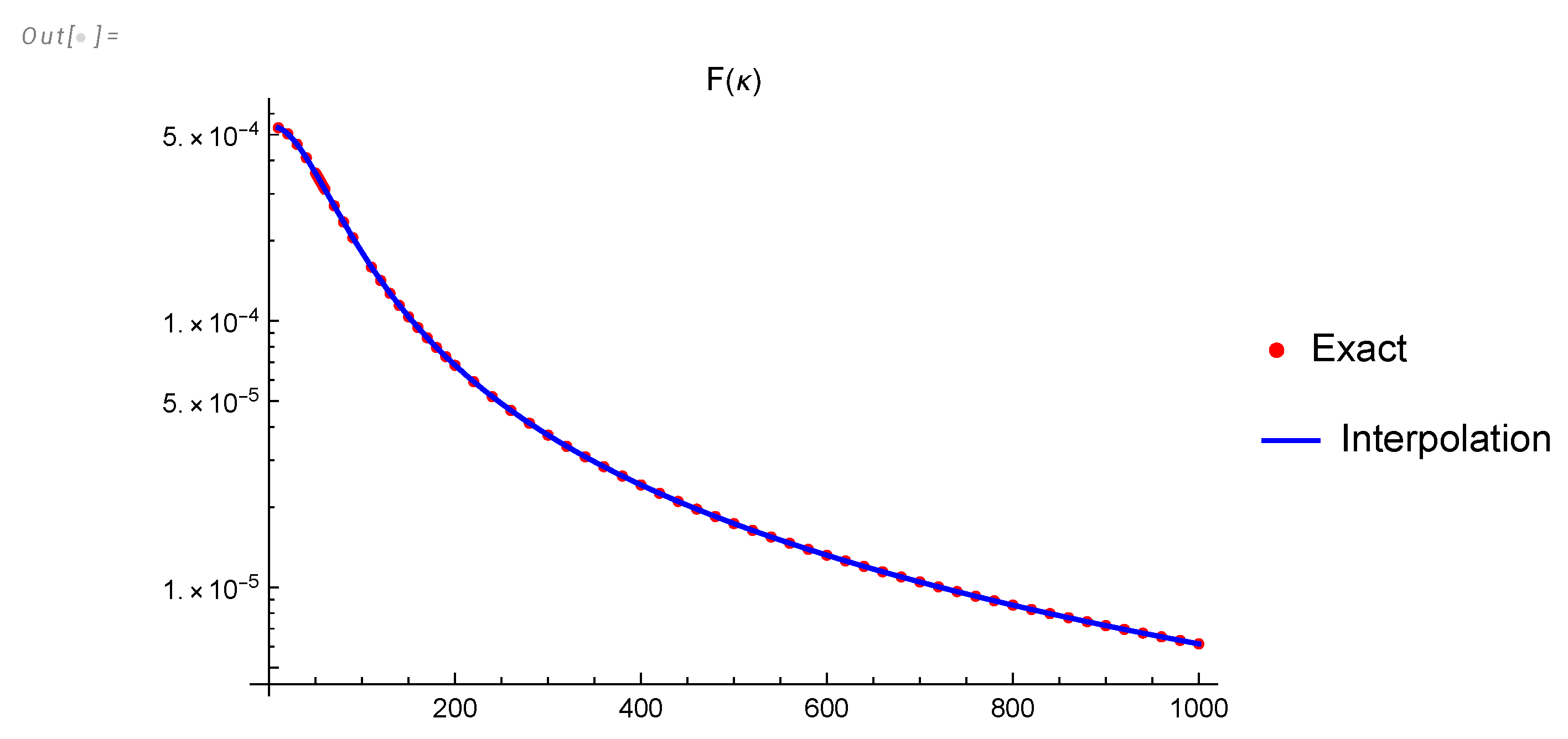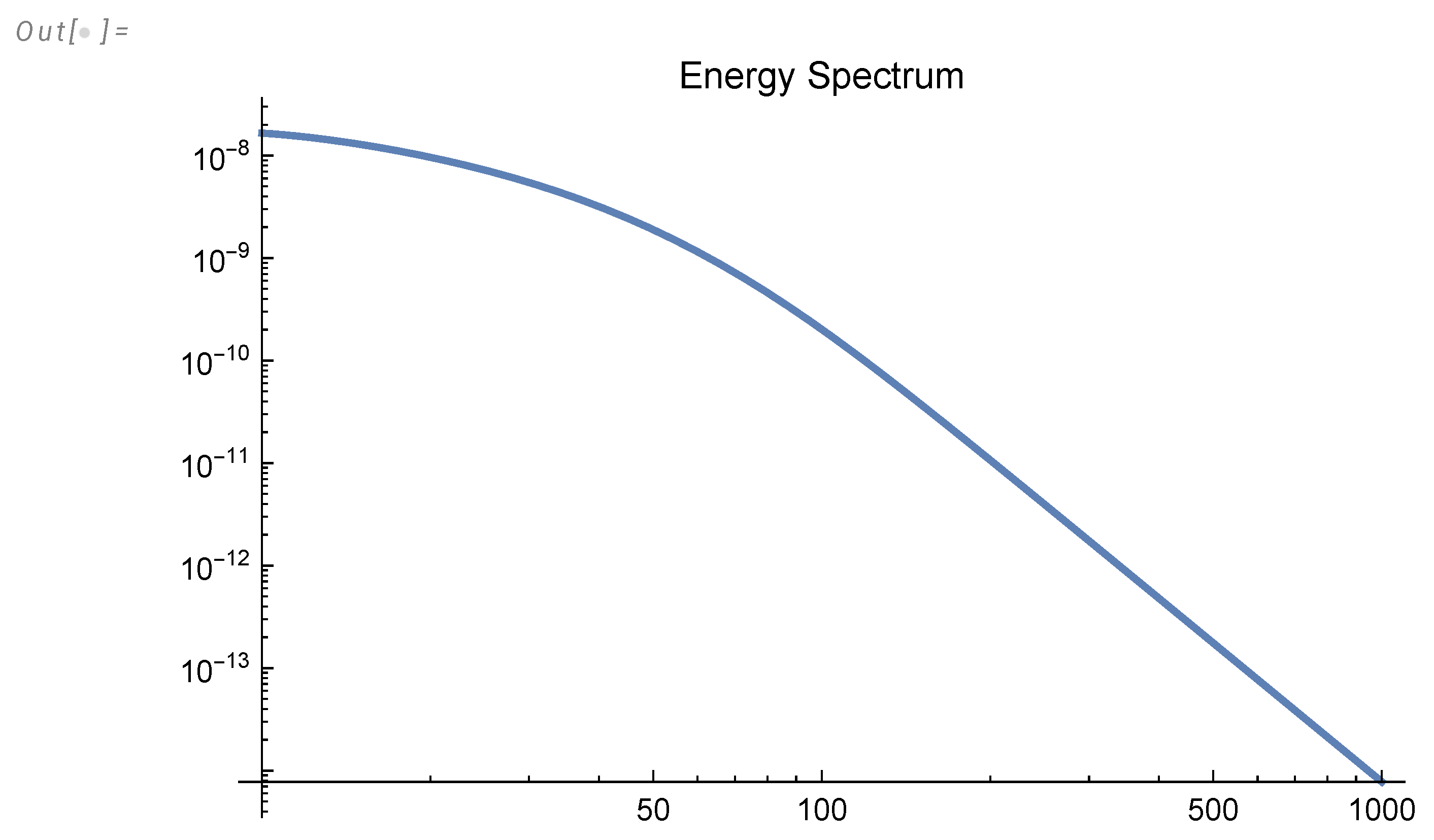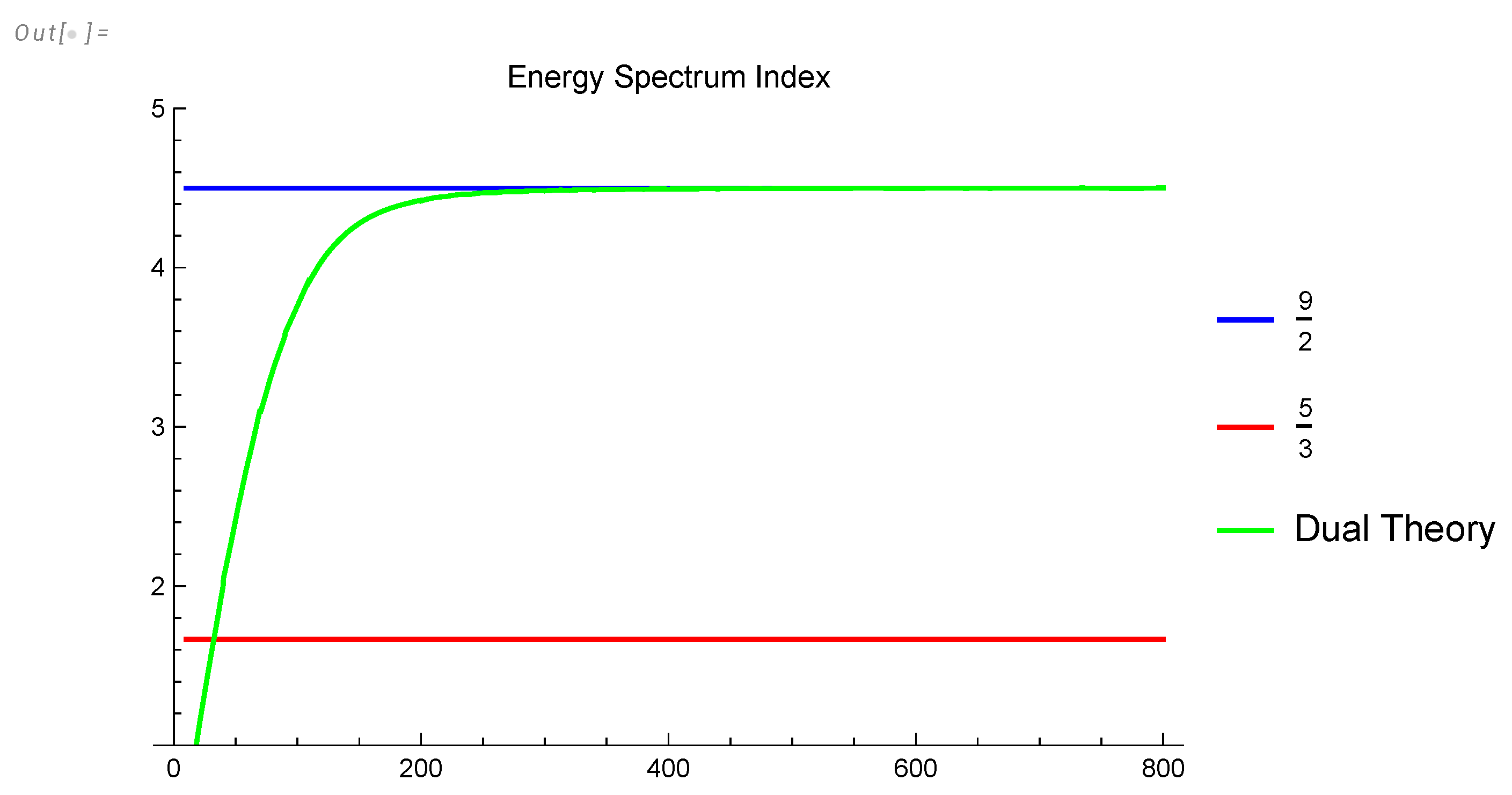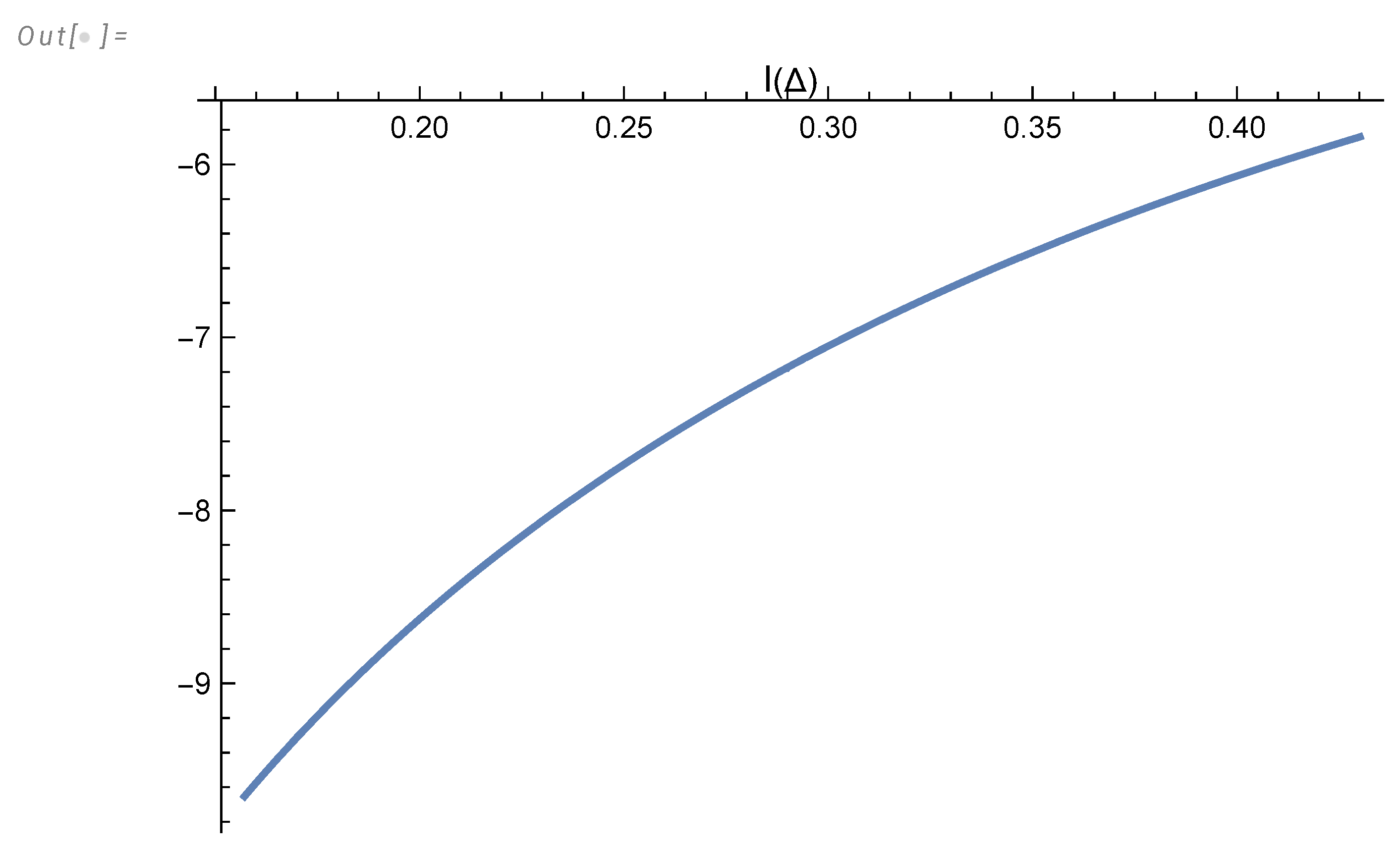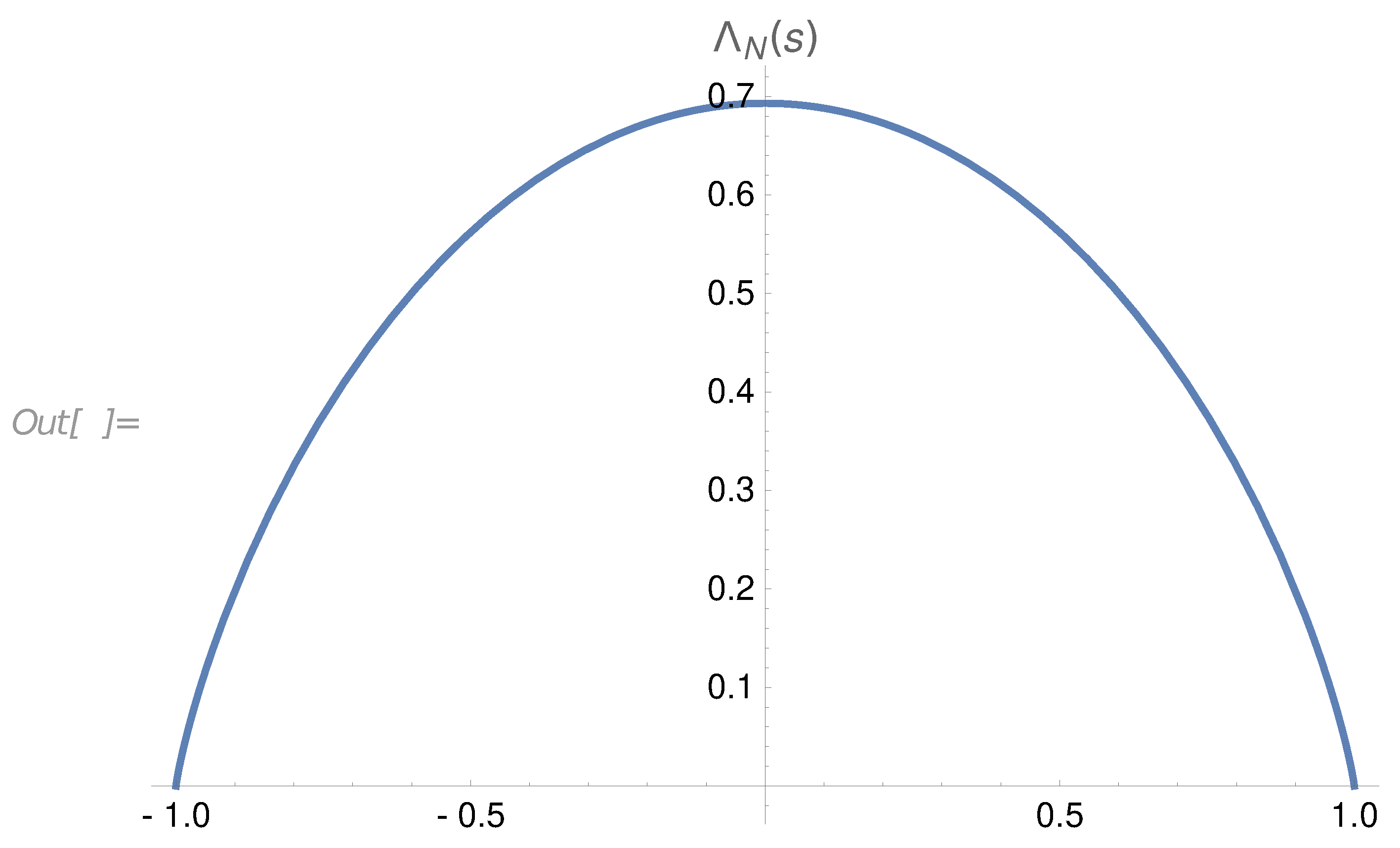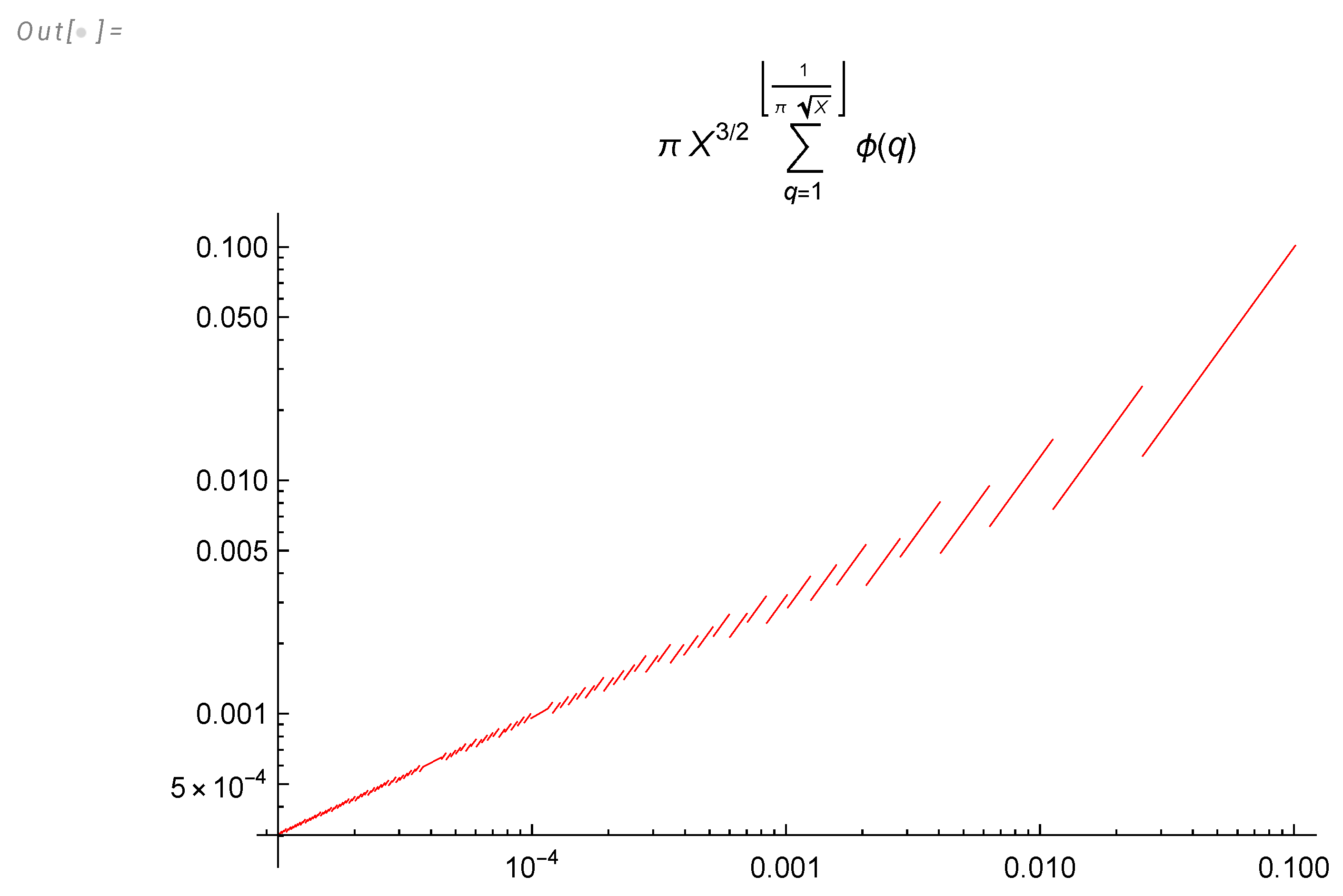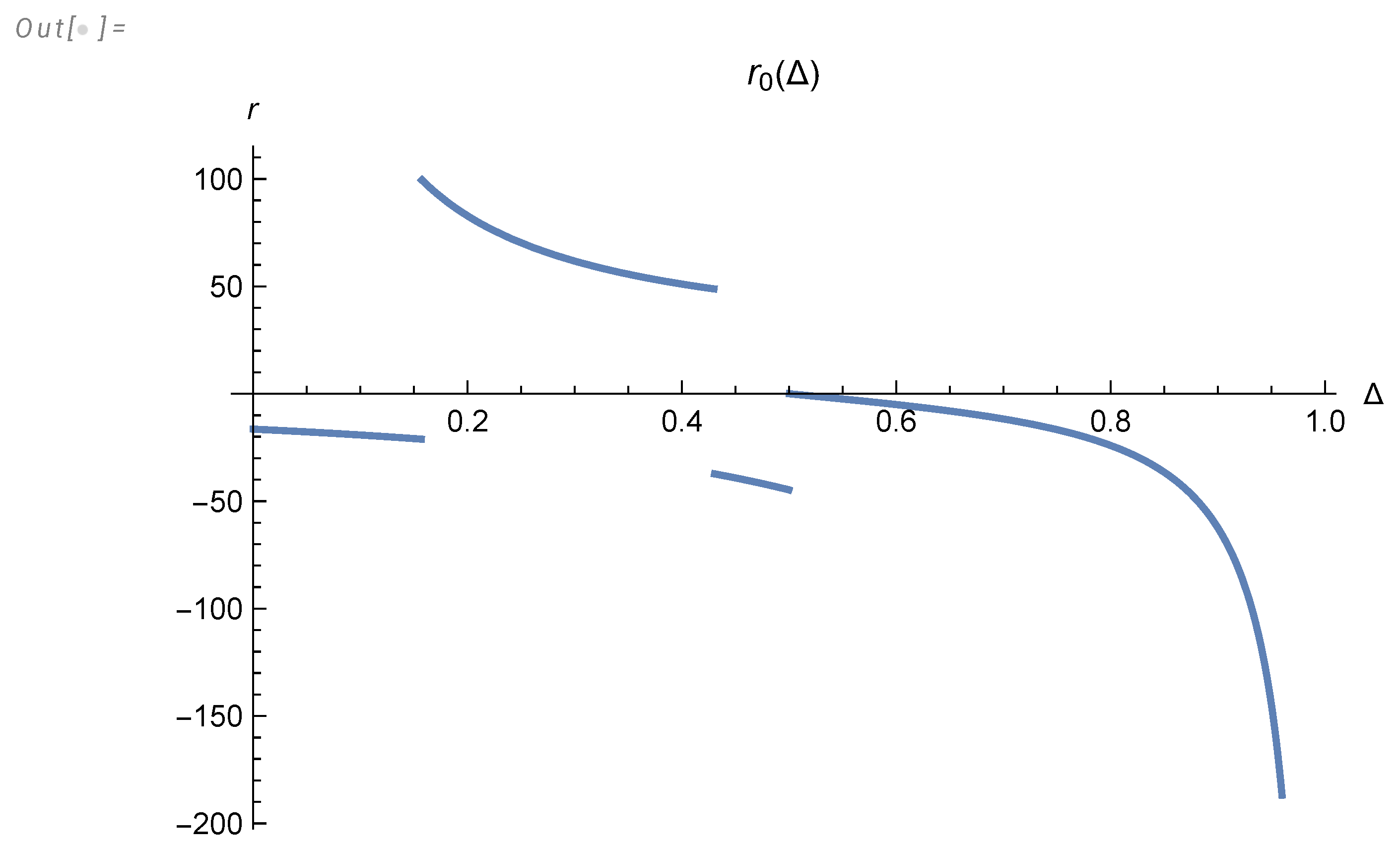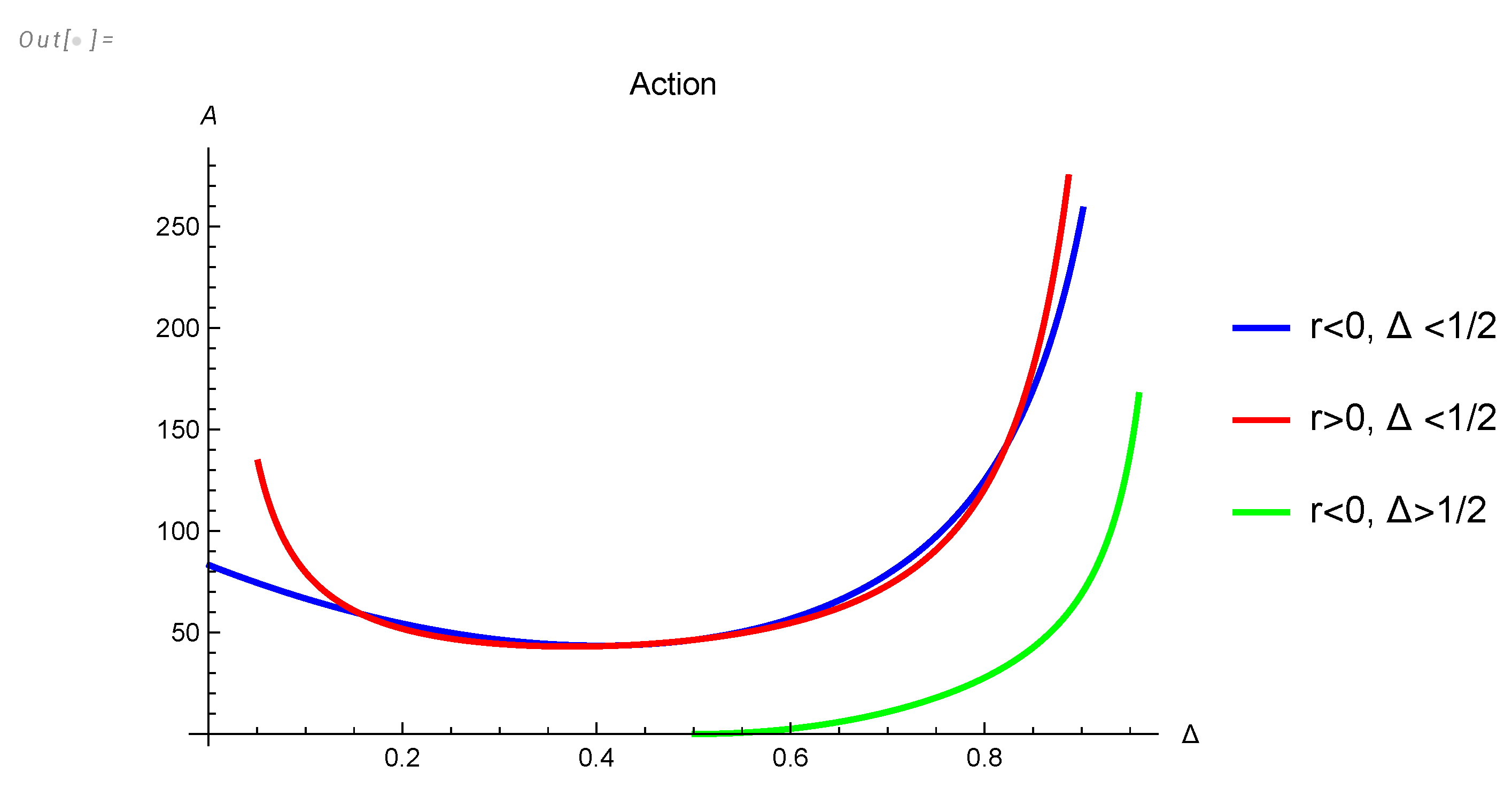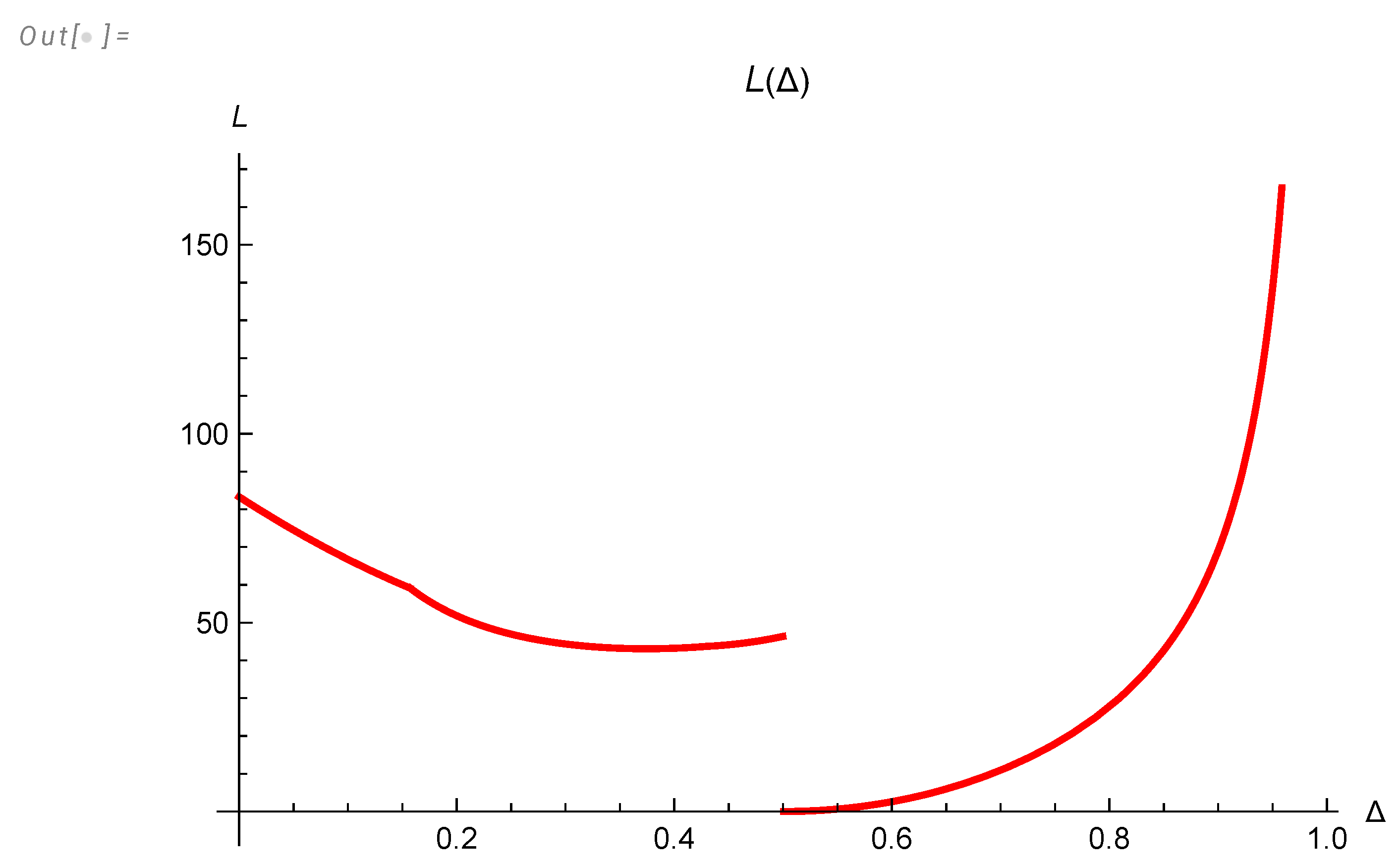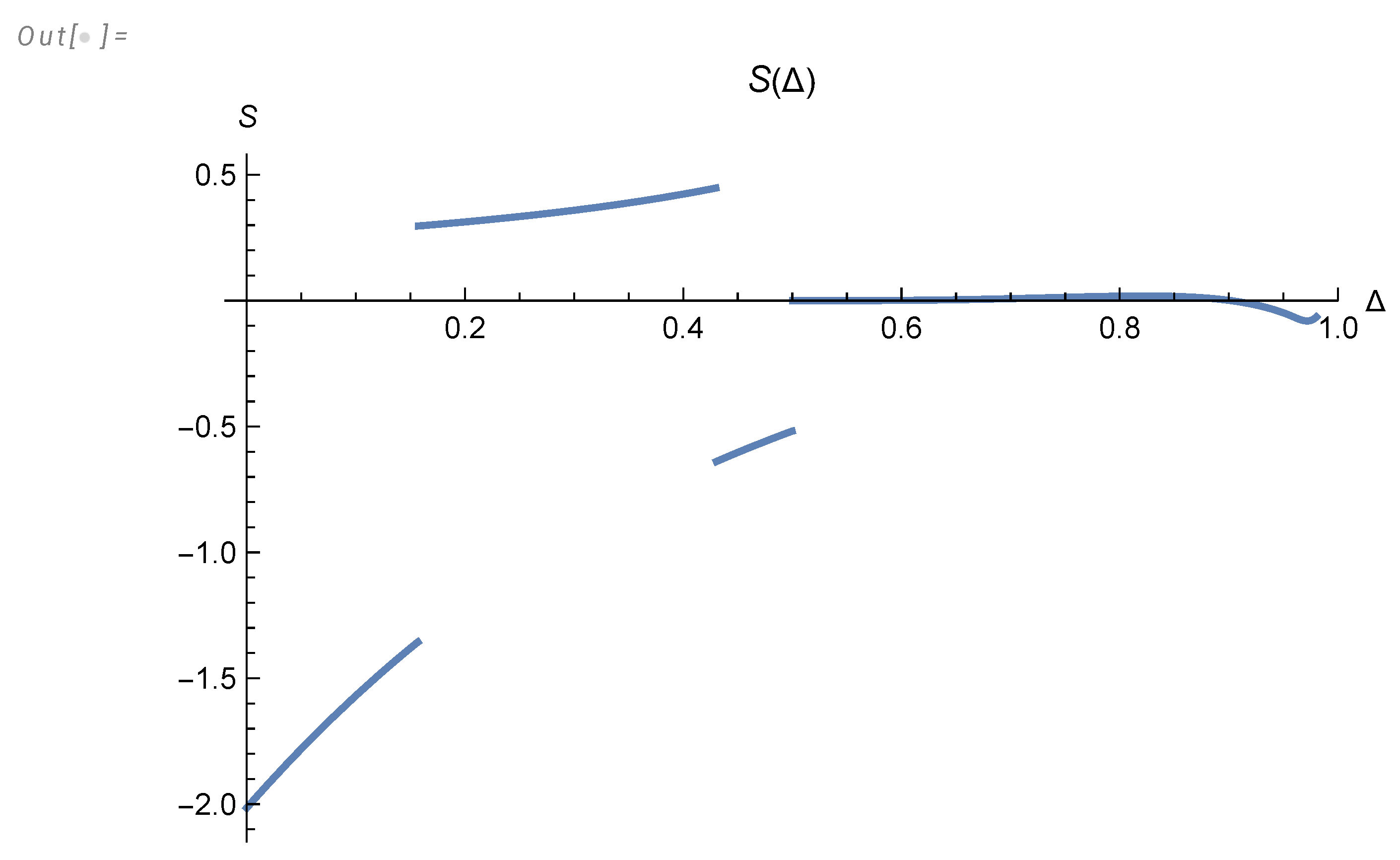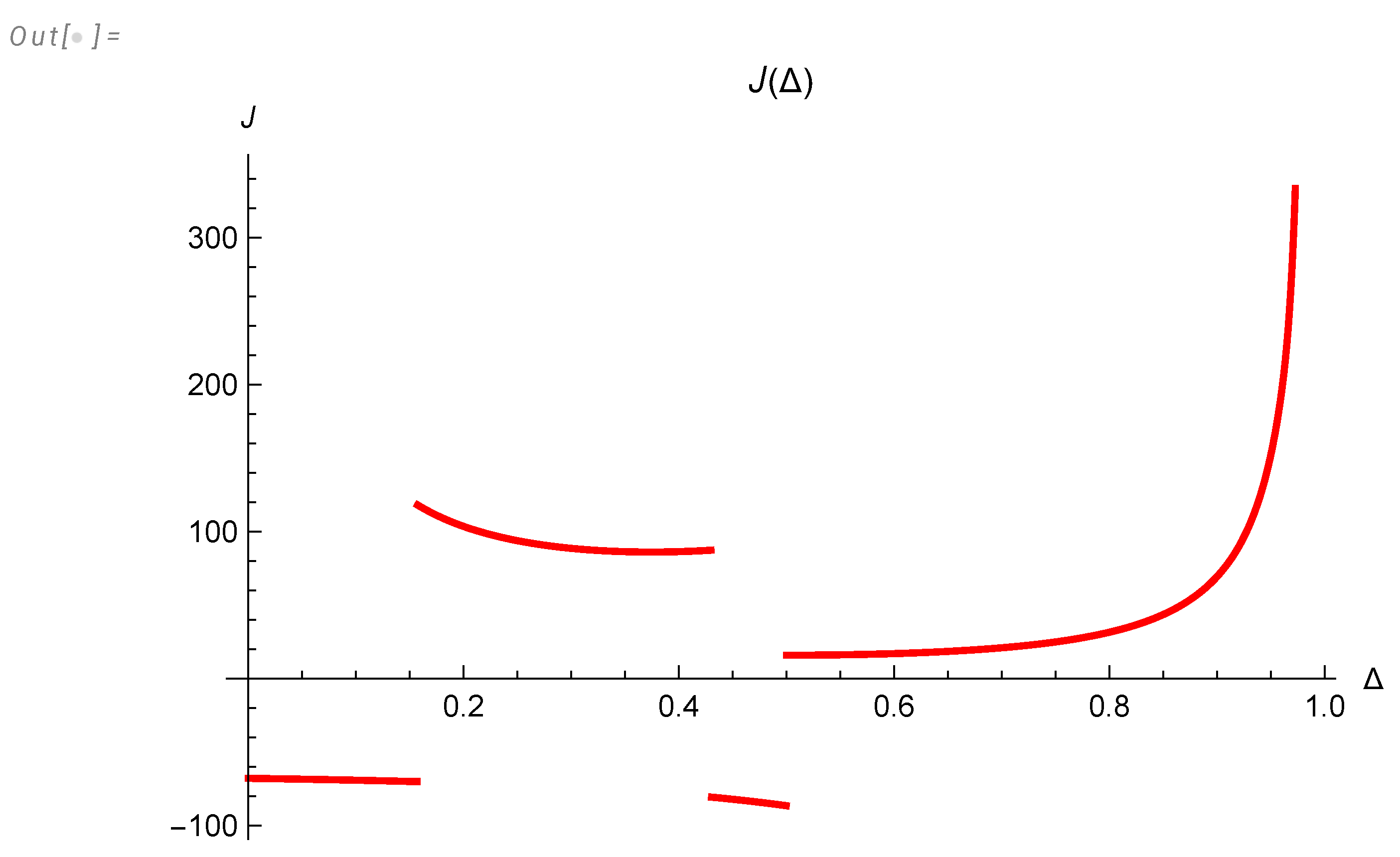Our paper will have two introductions: one for physicists and another for mathematicians.
The physics introduction discusses the possible correspondence between our theory and decaying turbulence as observed in real or numerical experiments. For a physicist, this theory provides a solution of the Hopf functional equation for the statistical distribution of velocity field in the unforced Navier-Stokes equation. There are strong indications that our theory applies to one of the two universality classes observed in these experiments.
1.1. Physical Introduction. The Energy Flow and Random Vorticity Structures
The decaying turbulence is an old subject addressed before within a weak turbulence framework (truncated perturbative expansion in the nonlinearity of the forced Navier-Stokes equation). Some phenomenological models were also fitted to the experiments: see the recent review of these models and the experimental data in [
4].
The perturbative approach is inadequate for the turbulence theory, which must be built from the first principles by solving the Navier-Stokes equations beyond the perturbation theory. The problem of universality of the strong turbulence with and without random forcing is the first question to ask when building such a theory.
The experimental data for the energy decay in turbulent flows, fitted in [
4] suggest the decay of the dissipation rate
with
or
depending on initial conditions (finite total momentum
or zero total momentum but finite total angular momentum
). So, two universality classes of decaying turbulence were observed in these experiments.
It is unclear which data in [
4] (if any) reached the strong turbulence limit corresponding to our regime. It is also possible that the stochastic forces added to the Navier-Stokes equation in simulations pollute the decaying turbulence. By design, these forces were supposed to trigger and amplify the spontaneous stochasticity of the turbulent flow. However, in our theory [
1], this natural stochasticity is related to a dual quantum system and is
discrete.
The Gaussian forcing with a continuous wavevector spectrum can distort these quantum stochastic phenomena as these forces stir the flow "with a large dirty spoon" all over the space at every moment. With forcing turned off at some moment and the turbulence reaching the universal stage in its subsequent decay, the energy dissipation would occur in vorticity structures deep inside the volume by the pure turbulent dynamics we are studying.
Some recent DNS reviewed in [
4] used such a setup, with forcing turned off. They observed subsequent energy dissipation, apparently reaching one of the two universal regimes (starting as
or
), presumably due to these random vorticity structures.
The following calculation supports this scenario. The energy balance in the pure Navier-Stokes reduces to the energy dissipation by the enstrophy in the bulk, compensated by the energy pumping by forces from the boundary (say, the large sphere around the flow).
The general identity, which follows from the Navier-Stokes if one multiplies both sides by
and averages over an infinite time interval, reads:
By the Stokes theorem, the right side reduces to the flow through the boundary
of the integration region
V. The left side is the dissipation in this volume, so we find:
This identity holds for an arbitrary volume. The left side represents the viscous dissipation inside V, while the right represents the energy flow through the boundary .
If there is a finite collection of vortex structures in the bulk, we can expand this volume to an infinite sphere; in this case, the term drops as there is no vorticity at infinity.
Furthermore, the velocity in the Biot-Savart law decreases as
at infinity, so that only the
term survives
This energy flow on the right side will stay finite in the limit of the expanding sphere in case the pressure grows as
, where
is the local force at a given point on a large sphere.
Where did we lose the Kolmogorov energy flow? It is still there for any finite volume surrounding the vortex sheet
The first term is the Kolmogorov energy flow inside the volume
V, and the second is the energy flow through the boundary.
Without finite force
acting on the boundary, say, with periodic boundary conditions, the boundary integral would be absent, and we would recover the Kolmogorov relation.
This relation, together with space symmetry properties in
leads to the Kolmogorov three-point correlation
In the conventional approach, based on the time averaging of the Navier-Stokes equations, the periodic Gaussian random force
is added to the right side. In this case, with periodic boundary conditions
In the limit when the force becomes uniform in space, we recover another definition with
, where
is a total momentum.
The turbulence phenomenon we study is a universal spontaneous stochasticity independent of the boundary conditions.
As long as there is an energy flow from the boundaries, the confined turbulence in the middle would dissipate this flow in singular vortex tubes. The spontaneous stochasticity results from the random distribution of these singular tubes inside the volume in the velocity flow picture [
5]. In the dual picture of our recent theory [
1], these are the random gaps in the momentum curve
.
The relation between the energy pumping on the large sphere and the distribution of the vortex blobs in bulk follows from the Biot-Savart integral
In case there is a finite total momentum of the fluid, there will also be a constant velocity added to the Biot-Savart integral. We are considering the fluid at rest, where no such term exists. Therefore, our theory belongs to the
universality class.
On a large sphere
with radius
,
Here
is the geometric center of each blob. Substituting this into the identity (
4), we directly relate the energy pumping with the forces at the boundary and the blob’s dipole moments of vorticity.
No forcing inside the flow is needed for this energy pumping; the energy flow starts at the boundary and propagates to numerous singular vorticity blobs, where it is finally dissipated. The distribution of these vorticity blobs is all we need for the turbulence theory. The forcing is required only as a boundary condition at infinity.
These assumptions about confined turbulence as stochastic dynamics of isolated vortex structures were confirmed in a beautiful experimental work by William Irvine and collaborators at Chicago University ([
6]). The energy was pumped in by vortex rings flying from eight corners of a large glass cube and colliding in the center, making a turbulent blob.
They measured the (approximately) Kolmogorov energy spectrum, proving that periodic boundary conditions were unnecessary.
The latest paper [
7] also observed how the singular vortex structures move and reconnect inside this confined turbulence.
As for the decaying turbulence, these authors observed (William Irvine, private communication) two distinct decay regimes, not just a single power law like the old works [
4].
Another critical comment: with the velocity correlations growing with distance by the approximate K41 law, even the forcing at the remote boundary would influence the potential part of velocity in bulk. This boundary influence makes the energy cascade picture non-universal; it may depend upon the statistics of the random forcing.
Two asymptotic regimes manifesting this non-universality were observed for the energy spectrum : one for initial spectrum and another for . The potential velocity part differs for these regimes, as the first adds a constant velocity to the Biot-Savart integral. In the general case, it will be a harmonic potential flow with certain boundary conditions at infinity, with explicit continuous dependence of the boundary forces.
Only the statistics of the rotational part of velocity, i.e., vorticity, could reach some universal regime independent of the boundary conditions at infinity. Certain discrete universality classes could exist as it is common to all in critical phenomena.
Unlike the potential part of velocity, the vorticity is localized in singular regions – tubes and sheets, sparsely filling the space, as observed in numerical simulations. The potential part of velocity drops in the loop equations, and the remaining stochastic motion of the velocity circulation is equivalent to the vorticity statistics. Therefore, our solutions [
1] of the loop equations [
2,
8] describe the internal stochastization of the decaying turbulence by a dual discrete system. Measuring these internal stochastic phenomena challenges real experiments and numerical simulations alike.
1.2. Mathematical Introduction. The Loop Equation and Its Solution
In the previous paper, [
1], we have found a family of exact solutions of the loop equation for decaying turbulence [
2,
8]. This family describes a
fixed trajectory of solutions with the universal time decay factor. The solutions are formulated in terms of the Wilson loop or loop average
In the first equation (the definition), the averaging
goes over initial data for the solutions of the Navier-Stokes equation for velocity field
. In the second one (the solution), the averaging goes over the distribution of the random variable
satisfying the loop equation [
1]. We choose in this paper the parametrization of the loop with
to match with the fermionic coordinates below (the parametrization is arbitrary, in virtue of parametric invariance of the loop dynamics).
The loop equation for the momentum loop
follows from the Navier-Stokes equation for
After some transformations, replacing velocity and vorticity with the functional derivatives of the loop functional, we found the following momentum loop equation in [
1,
8]
The momentum loop has a discontinuity
at every parameter
, making it a fractal curve in complex space
. The details can be found in [
1,
8]. We will skip the arguments
in these loop equations, as there is no explicit dependence of these equations on either of these variables.
This Anzatz represents a plane wave in loop space, solving the loop equation for the Wilson loop due to the lack of direct dependence of the loop operator on the shape of the loop.
The superposition of these plane wave solutions would solve the
Cauchy problem in loop space: find the stochastic function
at
, providing the initial velocity field distribution. Formally, the initial distribution
of the momentum field
is given by inverse functional Fourier transform.
This path integral was computed in [
1,
8] for a special stochastic solution of the Navier-Stokes equation: the global rotation with Gaussian random rotation matrix. The initial velocity distribution is Gaussian, with a slowly varying correlation function. The corresponding loop field reads (we set
for simplicity in this section)
where
is the velocity correlation function
The potential part drops out in the closed loop integral. The correlation function varies at the macroscopic scale, which means that one could expand it in the Taylor series
The first term
is proportional to initial energy density,
and the second one is proportional to initial energy dissipation rate
where
is the dimension of space. The constant term in (
23) as well as
terms drop from the closed loop integral, so we are left with the cross-term
, which reduces to a full square
This distribution is almost Gaussian: it reduces to Gaussian one by extra integration
The integration here involves all independent components of the antisymmetric tensor . Note that this is ordinary integration, not the functional one.
This distribution can be translated into the momentum loop space. Here is the resulting stochastic function
, defined by the Fourier expansion on the circle
At fixed tensor
the correlations are
Though this special solution does not describe isotropic turbulence, it helps understand the mathematical properties of the loop technology. In particular, it shows the significance of the discontinuities of the momentum loop
.
Rather than solving the Cauchy problem, we are looking for an attractor: the fixed trajectory for with some universal probability distribution related to the decaying turbulence statistics.
The following transformation reveals the hidden scaling invariance of decaying turbulence
The new vector function
satisfies an equation
This equation is invariant under translations of the new variable
, corresponding to the rescaling/translation of the original time.
There are two consequences of this invariance.
There is a fixed point for .
The approach to this fixed point is exponential in , which is power-like in original time.
Both of these properties were used in [
1]: the first one was used to find a fixed point, and the second one was used to derive the spectral equation for the anomalous dimensions
of decay
of the small deviations from these fixed points. In this paper, we only consider the fixed point, leaving the exciting problem of the spectrum of anomalous dimensions for future research.
1.3. The Big and Small Euler Ensembles
Let us remember the basic properties of the fixed point for
in [
1]. It is defined as a limit
of the polygon
with the following vertices
The parameters
are random, making this solution for
a fixed manifold rather than a fixed point.
It is a fixed point of (
37) with the discrete version of discontinuity and principal value:
Both terms of the right side (
37) vanish; the term proportional to
and the term proportional to
. Otherwise, we would have
, leading to zero vorticity [
1]. The ensemble of all the different solutions is called the big Euler ensemble. The integer numbers
came as the solution of the loop equation, and the requirement of the rational
came from the periodicity requirement.
We can use integration (summation) by parts to write the circulation as follows (in virtue of periodicity):
A remarkable property of this solution
of the loop equation is that even though it satisfies the complex equation and has an imaginary part, the resulting circulation (
45) is real! The imaginary part of the
is constant and thus yields zero after integration over the closed loop
.
There is, in general, a larger manifold of periodic solutions to the discrete loop equation, which has all three components of complex and varying along the polygon.
We could not find a global parametrization of such a solution
1. Instead, we generated it numerically by taking a planar closed polygon and evolving its vertices
by a stochastic process in the local tangent plane to the surface of the equations in multi-dimensional complex space.
We could not submit such a solution to an extra restriction needed to make circulation real. We cannot prove that such a general solution does not exist but rather take the Euler ensemble as a working hypothesis and investigate its properties.
This ensemble can be solved analytically in the statistical limit and has nice physical properties, matching the expected behavior of the decaying turbulence solution.
We assign equal weights to all elements of this set; we call this conjecture the ergodic hypothesis. This prescription is similar to assigning equal weights to each triangulation of curved space with the same topology in dynamically triangulated quantum gravity [
9]. Mathematically, this is the most symmetric weight assignment, and there are general expectations that various discrete theories converge into the same symmetry classes of continuum theories in the statistical limit. This method works remarkably well in two dimensions, providing the same correlation functions as continuum gravity (Liouville theory).
The fractions
with fixed denominator are counted by Euler totient function
[
10]
In some cases, one can analytically average over spins
in the big Euler ensemble, reducing the problem to computations of averages over the small Euler ensemble
with the measure induced by averaging over the spins in the big Euler ensemble.
In this paper, we perform this averaging over analytically, without any approximations, reducing it to a partition function of a certain quantum mechanical system with Fermi particles. This partition function is calculable using a WKB approximation in the statistical limit .
